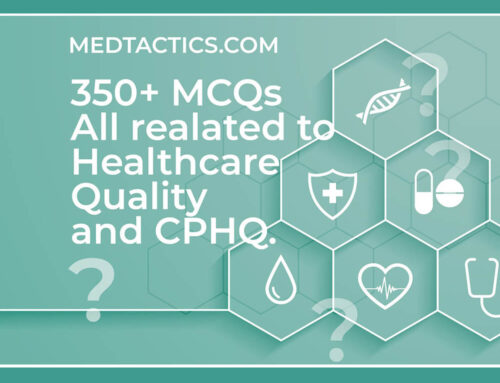How To Improve Quality Of Healthcare?
How to Improve Quality Of Healthcare? Quality improvement is defined by a statement made by American Medical Association that says, “The mission of the medical profession is to assure the safety, effectiveness and quality of health care delivered through the practice, management and administration of medical activities.” It is also agreed that “the use of scientific knowledge and its application to reduce unnecessary risks…” includes the improvement of quality. Quality improvement is always relative, as it depends on the criteria set by individual practitioners, hospitals, nursing homes and other healthcare entities.

Healthcare quality improvement is about identifying, describing and managing health problems. It is the process of creating quality plans for the care of patients. It aims at improving the efficiency of the healthcare systems by identifying current strengths and weaknesses and then working towards achieving combinations of services, procedures and technology that improve outcomes for all patients. It considers current and future needs and suggests methods to address these needs. This facilitates the harmonization of services and the improvement of patient care. Quality improvement in healthcare systems usually involves the use of information technologies in order to collect, organize, evaluate and synthesize all available data in an understandable form.
Health outcomes are the result of the quality improvement of healthcare systems. They can include the satisfaction rate, average time to first death, the ratio of deaths to live expectancy, cost of care, number of people treated on an outpatient basis, the number of hospital admissions, the percentage of claims filed and number of emergency department visits. Healthcare quality improvement involves the use of statistical analysis, case study review, meta-analyses, case histories and finally management recommendations. The ultimate aim of quality improvement in health care is to ensure better adherence to policy and procedural guidelines, reduce unnecessary tests and treatments, increase patient-centeredness, provide information relevant to the health care team, foster empowerment and provide feedback that improves the effectiveness of the health care system.
The National Institute for Healthcare Services recommends that healthcare systems should measure and improve the quality of health care provided to patients, while considering the patients’ impact on those quality improvements. The NIGS recommends that measures should be designed to maximize value for money while minimizing cost. The best method to achieve value for money through quality improvement is to use a consumer-based pricing structure, where the quality of care and costs of care are measured against the quality of service provided. The consumer-based pricing approach takes into account both quality and cost when designing a plan to improve patient care.
There are five key elements involved in quality improvement that are often neglected. The five key elements of patient-centeredness are scope, diagnosis, access, outcomes and satisfaction. According to the NIGS, each of these five areas is important in patient centeredness and requires at least a minimal level of attention. The NIGS also recommends that the patient-centeredness initiative focus on four discrete aspects to achieve a maximum benefit from the improvement:
- Scalable – A scalable system allows for changes to take place more quickly. In an ever-changing healthcare industry, it is essential that the system be flexible and able to respond quickly and effectively to improve quality. Healthcare providers need to be able to change course quickly to meet the needs of their patients. The best improvements come when a provider can make a specific change, but stay within the constraints of established policies and procedures.
- Results-oriented – Enhancing patient health requires measurable results that are used as measuring devices to determine whether a medical practice is achieving its set goals. Effective healthcare quality improvement requires measurable outputs that will allow for comparisons between patient care and the output required by policy. Healthcare professionals need to have a way to measure their progress and compare to the standard of care. Measurement is a critical component to any quality improvement effort.
Improving healthcare quality involves more than just a change in one aspect of the system. A complete and comprehensive improvement strategy will address operational challenges, organizational culture, and transformational processes. To ensure the success of a quality improvement program, implement a program at every level of the organization starting with the top down. Creating an environment where people’s goals are aligned will lead to long-term sustainable health improvement.





Leave A Comment